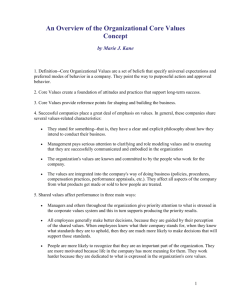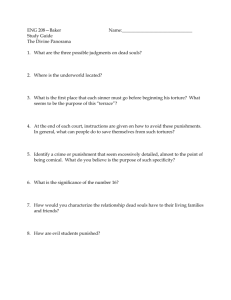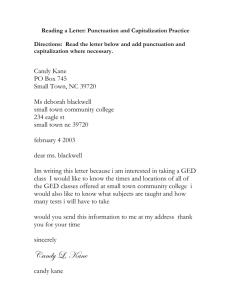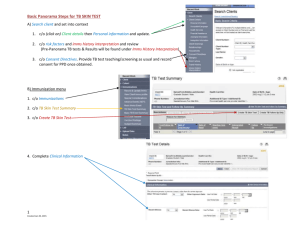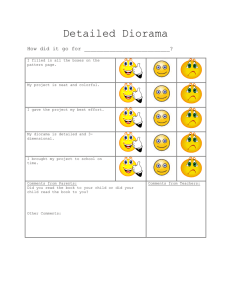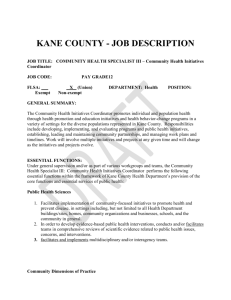`How We Live` by Gemma Tipton, 2006
advertisement
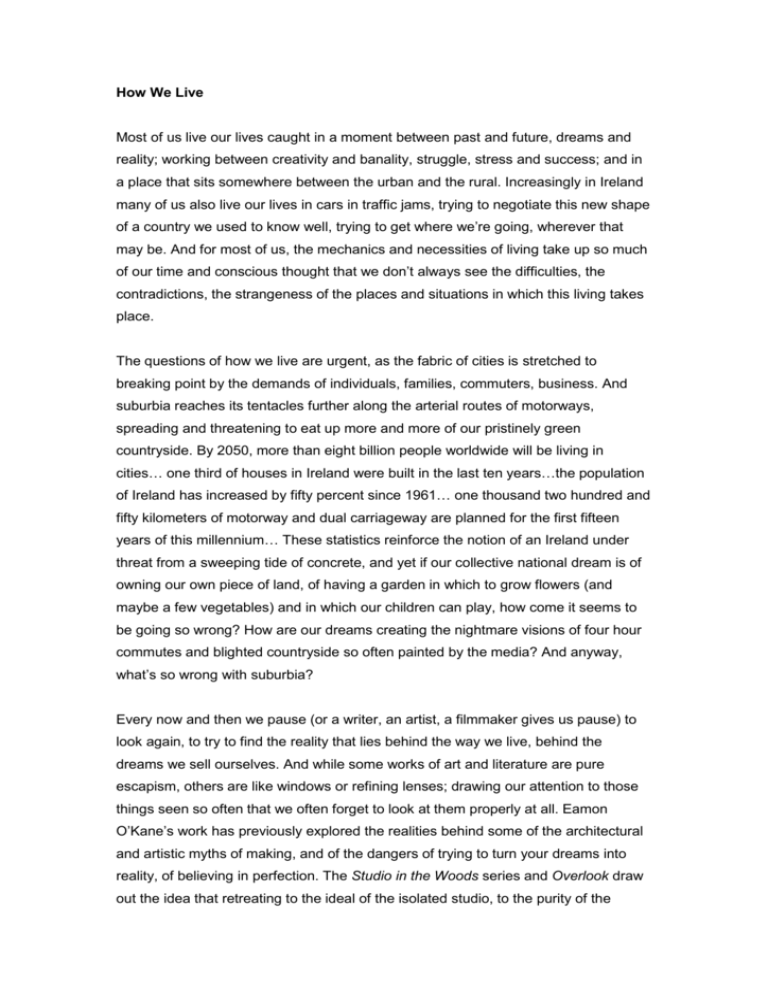
How We Live Most of us live our lives caught in a moment between past and future, dreams and reality; working between creativity and banality, struggle, stress and success; and in a place that sits somewhere between the urban and the rural. Increasingly in Ireland many of us also live our lives in cars in traffic jams, trying to negotiate this new shape of a country we used to know well, trying to get where we’re going, wherever that may be. And for most of us, the mechanics and necessities of living take up so much of our time and conscious thought that we don’t always see the difficulties, the contradictions, the strangeness of the places and situations in which this living takes place. The questions of how we live are urgent, as the fabric of cities is stretched to breaking point by the demands of individuals, families, commuters, business. And suburbia reaches its tentacles further along the arterial routes of motorways, spreading and threatening to eat up more and more of our pristinely green countryside. By 2050, more than eight billion people worldwide will be living in cities… one third of houses in Ireland were built in the last ten years…the population of Ireland has increased by fifty percent since 1961… one thousand two hundred and fifty kilometers of motorway and dual carriageway are planned for the first fifteen years of this millennium… These statistics reinforce the notion of an Ireland under threat from a sweeping tide of concrete, and yet if our collective national dream is of owning our own piece of land, of having a garden in which to grow flowers (and maybe a few vegetables) and in which our children can play, how come it seems to be going so wrong? How are our dreams creating the nightmare visions of four hour commutes and blighted countryside so often painted by the media? And anyway, what’s so wrong with suburbia? Every now and then we pause (or a writer, an artist, a filmmaker gives us pause) to look again, to try to find the reality that lies behind the way we live, behind the dreams we sell ourselves. And while some works of art and literature are pure escapism, others are like windows or refining lenses; drawing our attention to those things seen so often that we often forget to look at them properly at all. Eamon O’Kane’s work has previously explored the realities behind some of the architectural and artistic myths of making, and of the dangers of trying to turn your dreams into reality, of believing in perfection. The Studio in the Woods series and Overlook draw out the idea that retreating to the ideal of the isolated studio, to the purity of the Modernist palace set in some rural refuge, might actually drive you mad. The slightly sinister nature of these paintings make the white walls of the studios seem like the perimeters of lurking brooding prisons, beautifully designed and elegantly executed perhaps, but prisons nonetheless. Here, alone with himself, the artist may discover disturbingly unexpected consequences. In this latest body of work, O’Kane’s eye looks afresh at the promises of architecture and the dreams we hold of place. He explores suburban development, and the uneasy balance achieved between nature and cement. He looks at the created cultures of the shopping mall and the arts centre, and at the artificial, ersatz ‘countryside’ landscaped around them. Through painting, drawing, animation and the intriguingly magical construction of the Panorama, O’Kane presents a picture of time and place in flux, where the past and future mingle. A tree, tall and beautifully drawn, grows up the full height of an interior wall of the Draíocht gallery, while outside the ‘real’ tree, from which this one was copied slowly loses its leaves with the approach of winter. The shopping mall across the road seems to have become overgrown by the greenery planted to soften its harsh lines, the ordered lines of planted trees thickening to obliterate all but the grid on which the building was designed. Land is cleared of all its vegetation and built upon, before the vegetation reappears to retake the scene again. The ghosts of buildings and half-built on landscapes shimmer across otherwise bare canvases, and it is hard to tell whether these are images of what is to come, or the lingering reminders of what has been, but is now destroyed. We have a misplaced belief that buildings will last forever. In fact relatively few pieces of ancient architecture remain, and artefacts tend to be far older than the museum buildings that house them. Our grand new buildings (with the exception, perhaps, of those examples that are specifically preserved) are destined to be one day demolished, in ruins, over-built or perhaps even returned to green fields. Even where buildings remain in use, the vines that Frank Lloyd Wright once said were the architect’s only solution to hiding his mistakes, often threaten to undermine them. Grass grows between paving slabs, the roots of trees slither into foundations and ivy picks its way between bricks. The fabric of even our iconic institutions is fragile in face of time and nature. This idea can be seen in O’Kane’s Building Series, where trees come between us and views of buildings built to house our ‘eternal’ works of art, such as the Guggenheim New York, the San Francisco Museum of Modern Art, Gateshead’s Baltic. They are no longer the pristine bastions of culture or Modernity we might have imagined, and eternity is shown to be as spurious a dream as that of the patch of land in an unspoilt countryside. The idea is also described in the works of Russian-American duo Vitaly Komar and Alexander Melamid. In images from their Scenes from the Future series, buildings such as the Guggenheim and the Museum of Modern Art New York lie in ruins, surrounded by trees, returned to a pastoral setting. At Draíocht, O’Kane uses a Panorama to draw the focus of these ideas to Blanchardstown, one of three planned towns built to serve as satellites to Dublin (the other two are Lucan-Clondalkin and Tallaght). Blanchardstown is an intriguing mix of dream, reality and cultured nature. Through the spy holes of the Panorama, we see the relationship between nature and architecture creating a fantasy world where nothing is quite as we are used to it being. Distortions and juxtapositions show us the familiar view from Draíocht’s plate glass windows disrupted by trees, while another spy hole shows a different vista, an alternate landscape like a little jewel box of discovery. Walking around the Panorama, lured into peeping through all the apertures, the rewards are constant surprise (and delight), tempered by the realisation that while you can look at these mysterious and wonderful worlds, you can never reach them, never truly inhabit them yourself. Umberto Eco describes in his essay, Travels in Hyperreality, how the Diorama is used in museums to re-present reality. “Primarily,” says Eco, “the Diorama aims to establish itself as a substitute for reality, as something even more real.” The Panorama also presents a different order of reality. Like the Diorama, the Panorama presents a hyperreal environment where the viewer is lured into a world through a view not usually possible in ‘real’ life. O’Kane’s fascination with the Panorama comes from his enquiries into both art and architecture. Initially planning to study architecture, he became sidetracked with a year at Dublin’s National College of Art and Design (NCAD). “I got really into the process of making art,” he says, “so I stayed on.” One of the results of this fusing of interest between art and architecture is, however, an interest in context and place “whether it’s landscape, or cityscape, or different realities,” as well as in “how buildings get into the city network or map, and then how they function there.” Both Diorama and Panorama present the possibility of a bird’s, or God’s-eye view of the city network, and equally, both can interpolate extra elements into the scenes they depict. The fusing of the real with the imagined, the idealised, the fictional and the desired is territory O’Kane has also explored with his exhibition Retrospective, where his own works are interposed onto the interior walls of museums such as the Irish Museum of Modern Art. We cannot always believe what we see, but sometimes there is no reason why the fictional should not, at some future point, exist. The creation of such a fantasy also points to our own fantasies, those of the house in the countryside, of owning our own piece of land, which combine with reality to become the compromise of the suburbs. But do suburbs deserve their bad name? O’Kane’s Panorama at Draíocht makes the suburban view strange, invites the idea of different perspectives, and through that strangeness also invites us to consider how strange it is that it is there at all. How did these fields become the second-largest shopping centre in Ireland? Where did the people come from to decamp and re-establish their lives in this place? Are they happy, and how permanent is it all anyway? What is the future of Blanchardstown? Architects have often been accused of ignoring the suburbs, or when they do acknowledge them, of dismissing them almost instantly. Le Corbusier referred to “the wretched belt of the suburbs” and wanted them demolished. But Le Corbusier also had a plan to demolish much of the historic city centre of Paris, wanting to build instead an enormous park full of tower blocks (a bit like Ballymun). In his disappointing book, The Architecture of Happiness, Alain de Botton talks about how most of the ‘mistakes’ of architecture are genuine attempts to make the world a better place. Le Corbusier, he points out, “had no tail or horns,” in fact, “he appeared intelligent and humane.” Nonetheless, included in the idea of the architect is the idea of remaking the world; while included in the idea of the suburbs is instead the idea of the world spreading out, bit by bit. But perhaps this spreading out means that the suburbs are a more accurate picture of how we live now (messy, sprawling, ill planned, driven by desire, consumerism, the urge to control and conquer nature, and the belief in the individual to the point of social isolation) than the communality of inner cities or the social support systems of rural communities. Another architect with a well-meaning vision for the suburbs, who also later abandoned them, was Victor Gruen. Gruen was an Austrian Jewish Émigré, who arrived in New York in 1938 and brought with him some of the style of Vienna to the shops he designed in Manhattan. What he created for Southdale Minneapolis, however, was a building with all the shops turned inwards, with no windows (apart from at the façade), with escalators and air-conditioning and parking. What he created was the world’s first suburban shopping mall. Shopping malls, those ubiquitous boxes on the landscape, are now the reality of every largish suburb in the country, and yet they are utterly artificial creations, orchestrated to make an intense, hyper-real environment dedicated to one thing only: consumption. Gruen’s intentions were actually good, and were social as much as commercial. Inspired by Le Corbusier, he saw that the suburbs lacked places for people to meet away from the dangers of traffic and the hardships of bad weather. His Southdale had a garden court with magnolia trees, orchids, fountains and cages of exotic birds. Victor Gruen believed in the values of commerce. “It’s the merchants who will save our urban civilization,” he said. “‘Planning’ isn’t a dirty word to them; good planning means good business… sometimes self-interest has remarkable spiritual consequences.” Gruen’s Mall was a fantasy place, where people could meet to exchange gossip, information, ideas, news, and do a little shopping at the same time. Southdale was his dream of a social heart to the suburbs. But he was to return to Vienna disillusioned, calling malls “concentration camps”, and developers “bastards”. By the time he died in 1980, Gruen had built over forty four million square feet of malls, but "hell," he wrote, is "inescapable sameness." The Blanchardstown Shopping Centre has all the elements of Gruen’s fantasy, both good and bad. The problem it seems, is not with our dreams, but with what happens when we try to pluck them from the realms of the imagination; when we insist on trying to turn them into reality. Looking at the Panorama, with its spy holes drawing us into different worlds, rather like the shop windows in the Mall across the road, there is the uneasy feeling that we have got what we said we wanted, so why don’t we seem to have what we need? Discussing his work, Eamon O’Kane talks about exploring the idea of “architecture gone wrong” as well as looking at the ways in which it works. But as his drawings, paintings, animations and installations demonstrate, it is not necessarily architecture gone wrong, but human nature. "It is the unique accomplishment of our era," wrote Victor Gruen, "that, for the first time, we are able to destroy faster than nature can replenish." This may be true, but as we can see from O’Kane’s exhibition, Panorama, nature can wait… Gemma Tipton is an independent writer and critic on art and architecture based in Dublin
